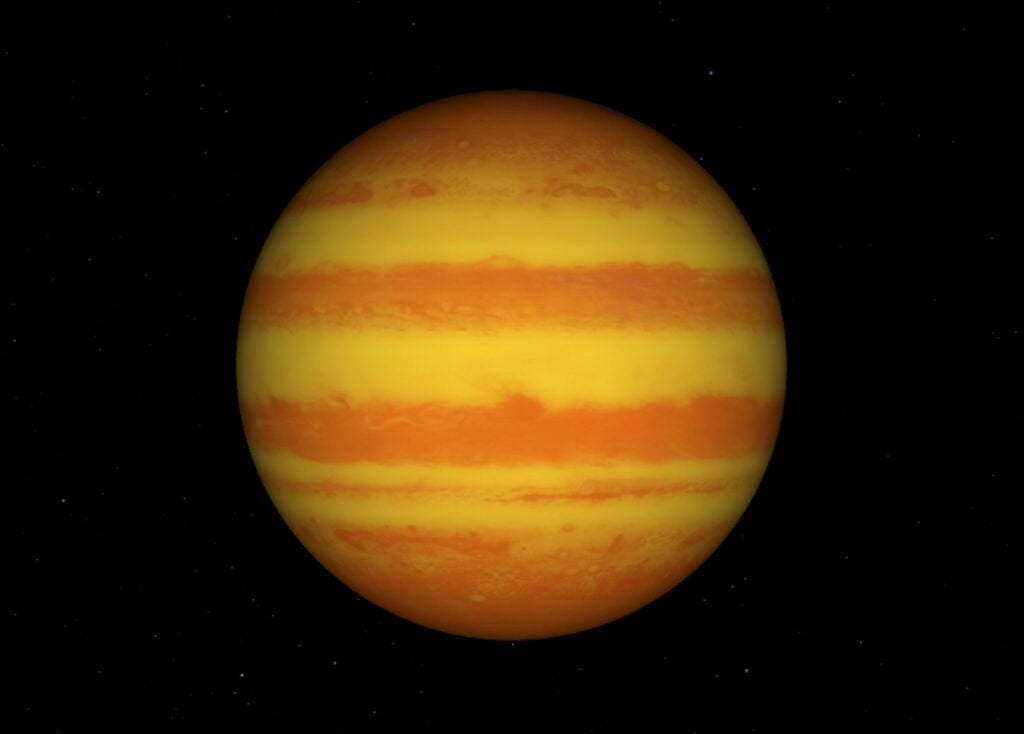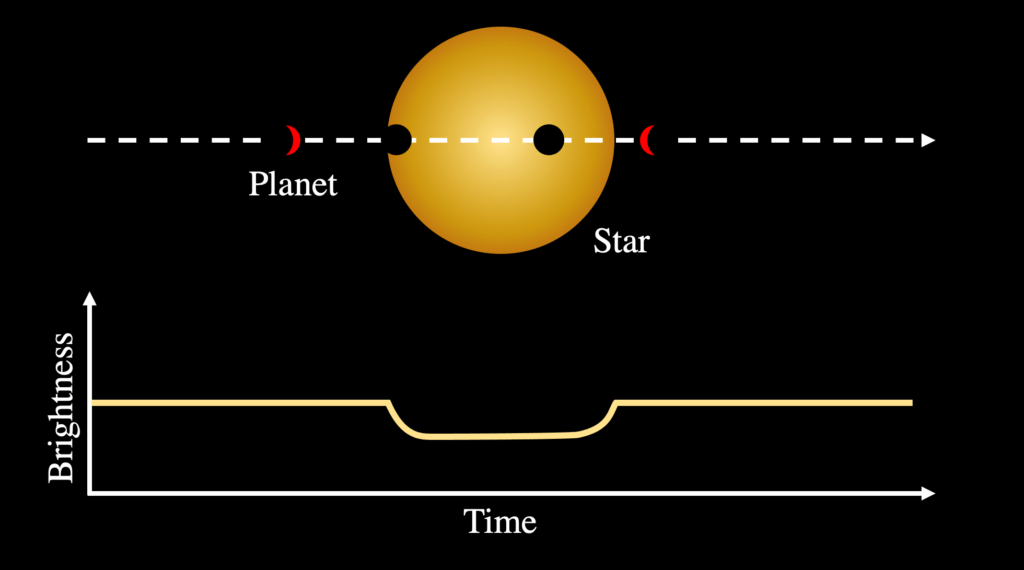Tel Aviv University team uses AI to detect new worlds more than 600 light years away
A research team led by Israeli scientists has found two new giant planets in remote solar systems.
The planets are made mostly of gas and are about the size of Jupiter – which is 1,300 times bigger than planet Earth.
They are located so close to their suns that they can complete an orbit – equivalent to our 365-day year – in less than four days.
Researchers from Tel Aviv University (TAU) headed a team that used data from the European Space Agency’s (ESA) Gaia spacecraft (also called space observatory) to identify the planets
Gaia-1b, which is 1,186 light years from Earth, and Gaia-2b, which is 682 light years away, are named after the observatory.

The discovery “marks another milestone in the scientific contribution of the Gaia spaceship’s mission, which has already been credited with a true revolution in the world of astronomy,” the university said in a statement.
Gaia has been mapping a billion stars in our galaxy since it was launched in December 2013. The team used artificial intelligence to help them identify changes in the brightness of the many suns they were observing, a telltale sign that they were being obscured by an orbiting planet.
“Gaia is constantly monitoring hundreds of millions of stars, studying their various properties. Among other things, it is monitoring their brightness. As planets orbit the stars, they might hide part of their stellar surface, causing an apparent slight periodic dimming of the star,” Prof. Shay Zucker, one of the TAU researchers, tells NoCamels.
“This way — to detect planets — was known for many years. Gaia was not meant for this purpose and was not optimized for this task. Nevertheless, my team looked for this effect,” he continues, “So we developed the needed software tools to detect their periodic dimmings and indeed we found them.
“Gaia has done much more than detect planets,” “That’s actually only a small fraction of Gaia’s scientific contribution. Gaia was, first and foremost, meant to map our galaxy – the Milky Way – in unprecedented precision. Thus, its contribution to other fields in astronomy (beyond planets orbiting other stars) is huge.”
This discovery “was made in the wake of precise searches, using methods of artificial intelligence,” Zucker said in a TAU statement. “The measurements we made with the telescope in the US confirmed that these were in fact two giant planets … located so close to their suns that they complete an orbit in less than four days, meaning that each Earth year is comparable to 90 years of that planet.”

“We confirmed they were planets by performing additional observations using Earth-based telescopes. We looked for tiny motions of stars that were related to the effect of [motion] of a planet,” Zucker says.
News of the new planets comes just as NASA published photos taken by James Webb Space Telescope, the largest optical telescope in space, designed to view objects too old, distant, or faint for the Hubble Space Telescope. The photos also include stars that were previously obscured — as well as cosmic cliffs, and emerging stellar nurseries — an unseen universe that is said to mark the dawn of a new era in astronomy, according to the NASA Jet Propulsion Laboratory, the federally funded research and development center and NASA field center in California.
In March, the Gaia spaceship spotted the James Webb telescope while both were working deep space.
Gaia is a space observatory of the ESA, launched in 2013 and expected to operate until 2025. As Zucker says, the spacecraft is designed to measure the positions, distances, and motions of stars with unprecedented precision, called astrometry.
Sign up for our free weekly newsletter
Subscribe“Other space missions like the American Kepler or TESS missions were tailored for the detection of planets – but not Gaia. However, we have shown that this remarkable piece of technology can also contribute to the field of planets around other stars. Astronomers are really eager to detect such planets, because of the exciting prospects of eventually finding planets that can host life.”
Prof. Zucker, head of the Porter School of the Environment and Earth Sciences, together with doctoral student Aviad Panhi, from the Raymond and Beverly Sackler School of Physics & Astronomy led the team that discovered the planets. The team is part of the DPAC consortium commissioned by the European Space Agency to analyze data from the Gaia space observatory, Zucker explains.
The Gaia Data Processing and Analysis Consortium (DPAC) is a group of over 400 European scientists and software engineers with the objective to design, develop and execute the data processing system for ESA’s Gaia space astrometry mission.

“The purpose of the study was to make sure Gaia was realizing its full potential and also detecting planets (in addition to its many revolutionary contributions,)” Zucker explains. ”
SEE ALSO: Israeli Astronaut Eytan Stibbe Has Safe Return To Earth After 2 Weeks In Space
Gaia’s ability to discover planets via the partial occultation method generally requires continuous monitoring over a long period of time. The research team charged with this mission developed an algorithm specially adapted to Gaia’s characteristics and searched for years for these signals in the cumulative databases from the spaceship.
The results of the study conducted in cooperation with the ESA and research groups of the Gaia space telescope, were published in the scientific journal Astronomy & Astrophysics. The research was supported by the Israeli Space Agency and the Israeli Ministry of Science and Technology.
“The planets were discovered thanks to the fact that they partially hide their suns every time they complete an orbit, and thus cause a cyclical drop in the intensity of the light reaching us from that distant sun,” said doctor student Panhi, “To confirm that they are in fact planets, we performed tracking measurements with the American telescope called the Large Binocular Telescope, located in Arizona.” According to Panhi, the telescope is equipped with two giant mirrors, each with a diameter of 8.4 meters, making it one of the largest telescopes in the world today.
“The telescope makes it possible to track small fluctuations in a star’s movement, which are caused by the presence of an orbiting planet,” he added.
More planets

There are eight planets in our solar system, but less known are the hundreds of thousands of other planets in our Milky Way galaxy, which contains untold numbers of solar systems.
Planets in remote solar systems were first discovered in 1995 and have been an ongoing subject of astronomers’ research ever since, in hopes of using them to learn more about our own solar system.
Zucker said that besides the two new planets, the team has discovered 40 more planet candidates also detected by Gaia. ” The discovery highlights the ability of Gaia to detect planets. As Gaia accumulates more data, it will detect many more planets in the coming years,” he tells NoCamels.
“The astronomical community will now have to try to corroborate their planetary nature, like we did for the first two candidates. The data continues to accumulate, and it is very likely that Gaia will discover many more planets with this method in the future,” he said.
Related posts

Israeli Medical Technologies That Could Change The World

Harnessing Our Own Bodies For Side Effect-Free Weight Loss

Missing Protein Could Unlock Treatment For Aggressive Lung Cancer




Facebook comments